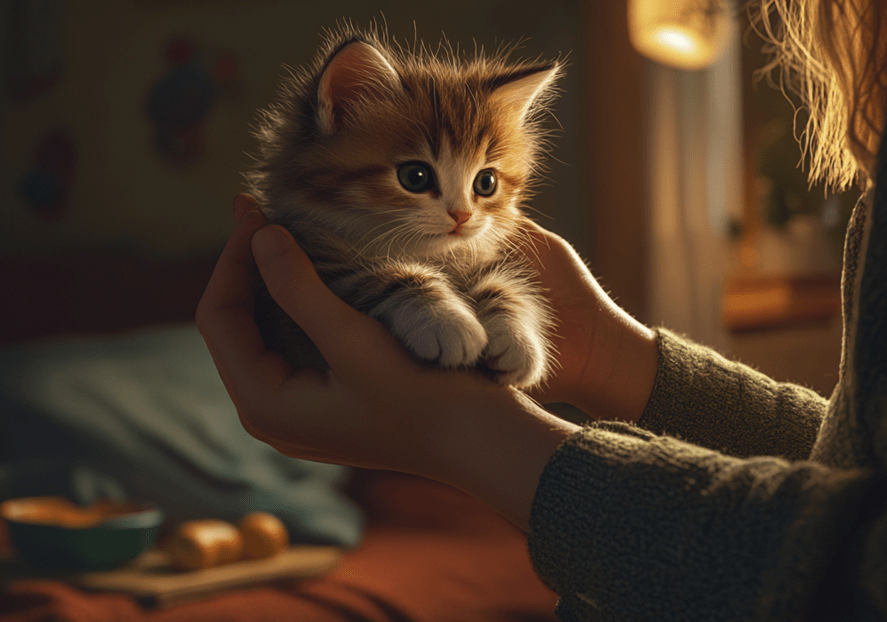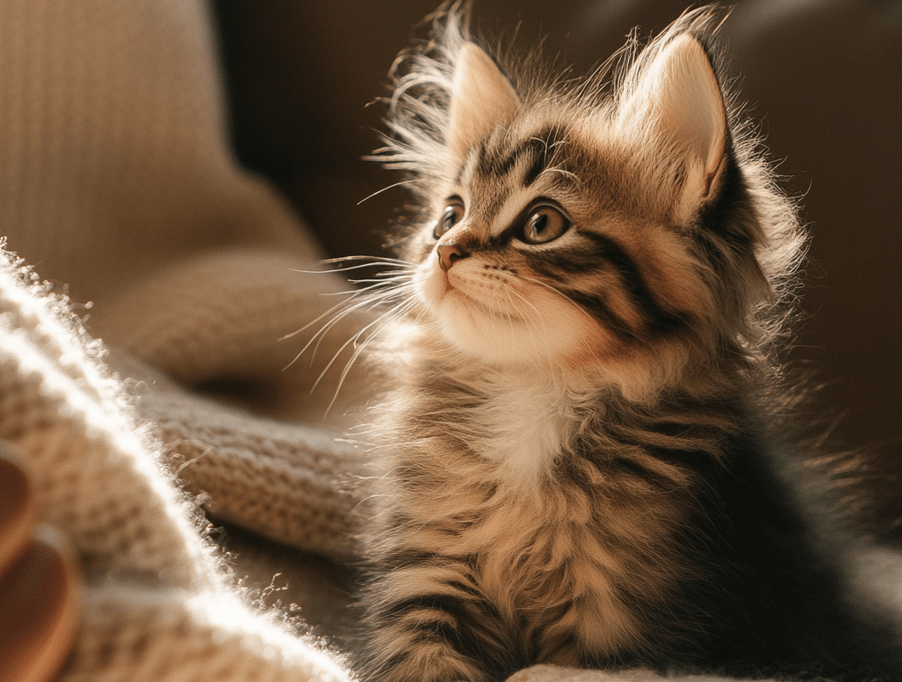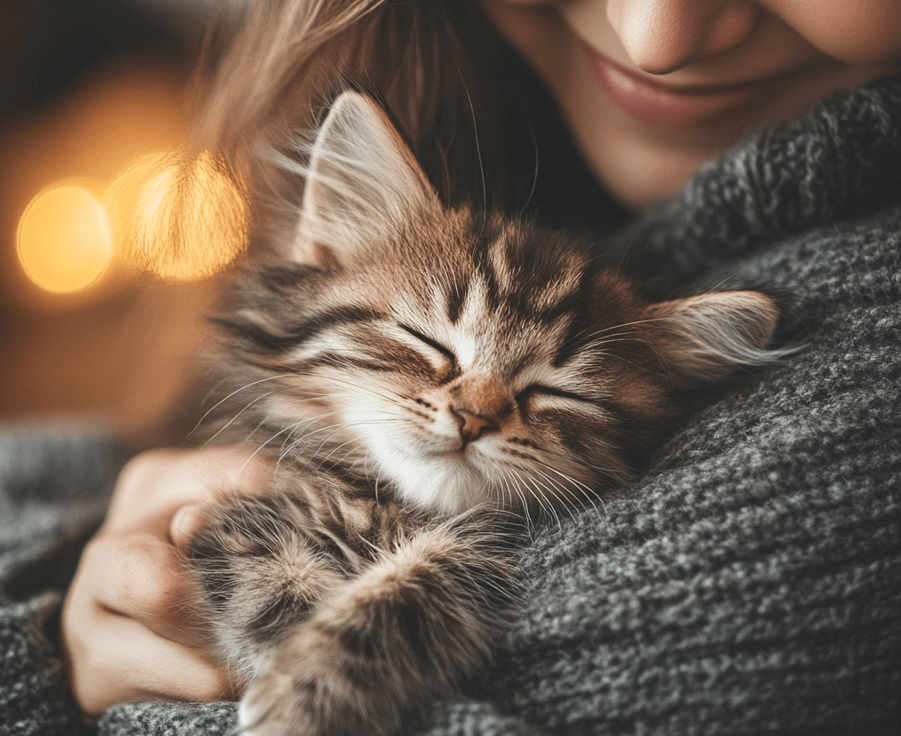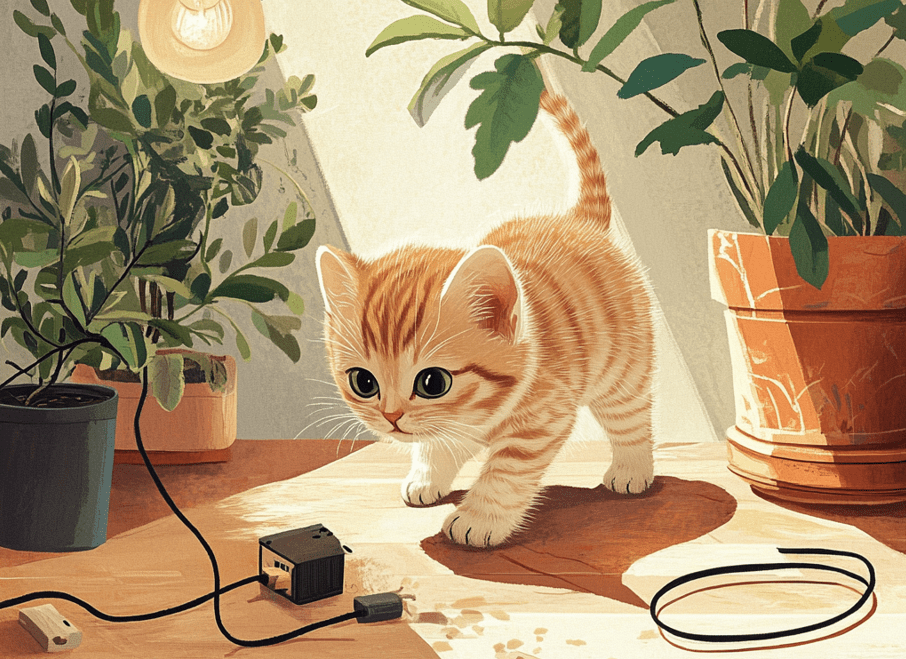
Are you looking to bring a new, young cat into your home? You may want to kitten-proof your home so that your kitten can’t damage any furniture in your home, and the kitten’s socialization won’t be a problem. Kittens are adventurous by nature and spend a lot of time discovering their environment by licking and playing with whatever happens to be in front of them. So, taking those proper preparations is going to keep it (her), safe and the rest of your stuff.
Moving an older cat into your home, a grown cat is less playful than a kitten and more mischievous but you have to think about the best protection for your furniture/house. Older cats will also play, and making your home safe for the kitty in advance assures her a safe place to be active.
To watch the summary of this article, just watch this video-
Why is Kitten-Proofing Your House Important?
The character of these miniature felines comes equipped with an instinctual curiosity, a super keen sense of smell and breathtaking flexibility to leap, climb and grab things effortlessly. While lovable, these traits can translate to dangerous behaviors for the kittens as well—and your belongings. For instance:
1.Kittens love anything wriggling and moving and are attracted to things that they can bat with their paws, like electric cords, breakable objects, toilet articles and table linens. Many of these items can be hazardous to kittens, or easy to break.
2.Kittens have a built in desire to climb and will try to climb up anything that is close by. They want to escape through an open door or window.
3.It is natural for kittens to keep their claws by scratching and stretching, which is ok as long as they do not damage your favorite clothes or rugs.
4.Kittens are known to be similar to human infants living with their noses inches from the earth; they also taste everything, which includes litter or garbage.
5.Kittens do not have the ability to distinguish between a normal human diet and cat food, or recognize which kind of treats might be toxic.
Knowing these behaviors then allows you to identify them and further prompt action to provide a safer environment for your new curious kitty.
Essential Tips To Kitten-Proof Your Home
Kittens: Learning by Touch and Taste
Kittens, like human infants, use their senses to discover the world around them and primarily sight but also touch (via paws) and taste. Not only do cats of all ages enjoy fun play, playing is hardwired into a cat survival system. Important to note that while you may have thought of your floors as clean, upon a closer inspection there are items which could harm your kitten.
Find and remove these items before bringing your kitten home, as they could easily be hiding behind or under furniture or shelves.
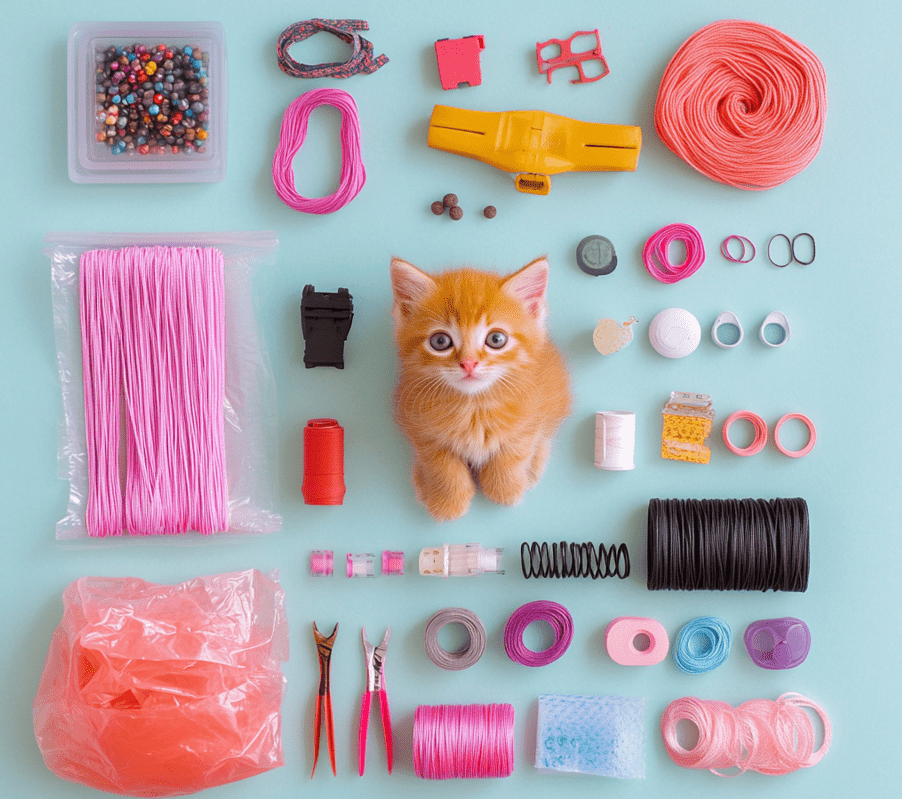
1.Strings
2.Twist ties
3.Hair ties
4.Ribbons
5.Rubber bands
6.Plastic bags
7.Sewing supplies
8.Doll or toy accessories
9.Small game pieces
10.Erasers
Kittens cannot resist wriggling through loose objects that they can paw and bite at and eat, and are also attracted to other such potentially dangerous items such as electrical cords. It is also crucial to tie up all wires that cannot be pushed out of the way. For example, tape cords for items that are in permanent spots. Pay extra attention to temporary items like an iron that has a dangling cord; otherwise you will have a very curious kitten who is interested in the mystery of this cord. Those items, if pulled, could do extensive damage.
Along with electrical cords, ensure telephone wires, curtain tie-backs and blind cords are safely tucked away as well. Remember to include these things while you are kitten-proofing your house.
Warning: Poisonous to Animals
Having houseplants can greatly improve the design of your home; however, it is very important to monitor what your newly adopted kitten has access to. These indoor plants, including philodendron, lilies (but toxic to cats only), mistletoe and poinsettia can be extremely toxic, having a strong effect for the health of kittens upon any regular exposure. Garden plants — Common garden plants such as lilies, azalea and daffodils are also dangerous to kittens. Make sure any flowers you do bring into your house are not poisonous to your feline friend.

Ensure Toilet Lids Are Closed
Cats and kittens will frequently go in search of water during the day to hydrate themselves. Unfortunately for you, a convenient source is the toilet that may not be to your taste and this is one of the water sources where roaches live. To avoid an unhappy situation make sure to always close the lid of your toilet as leaving it open creates a potential drowning spot in case your kitty falls in! Also make sure to secure your trash bins, laundry hampers and washing machine/dryer machines so that the kitten cannot get in there where they might become trapped and be unable to get out.
Hazards of Hot Spots
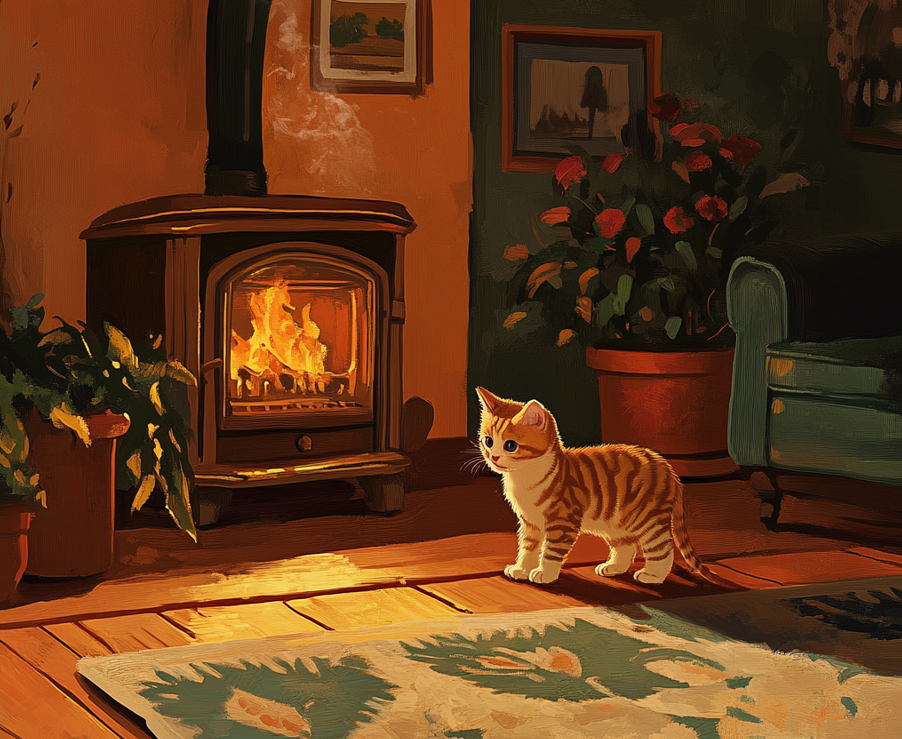
Your kitten loves it warm, but you need to make sure her favorite places are safe. It is wise to discourage her from napping by the heat source, be it a fireplace or a wood stove. Beyond reducing her climbing areas or delicately stirring her awake after a certain length, you may have to restrict her access. The heaters, if left plugged in, should be monitored at all times to avoid them being a hazard of overheating the household.
How to Protect Furniture from Cats
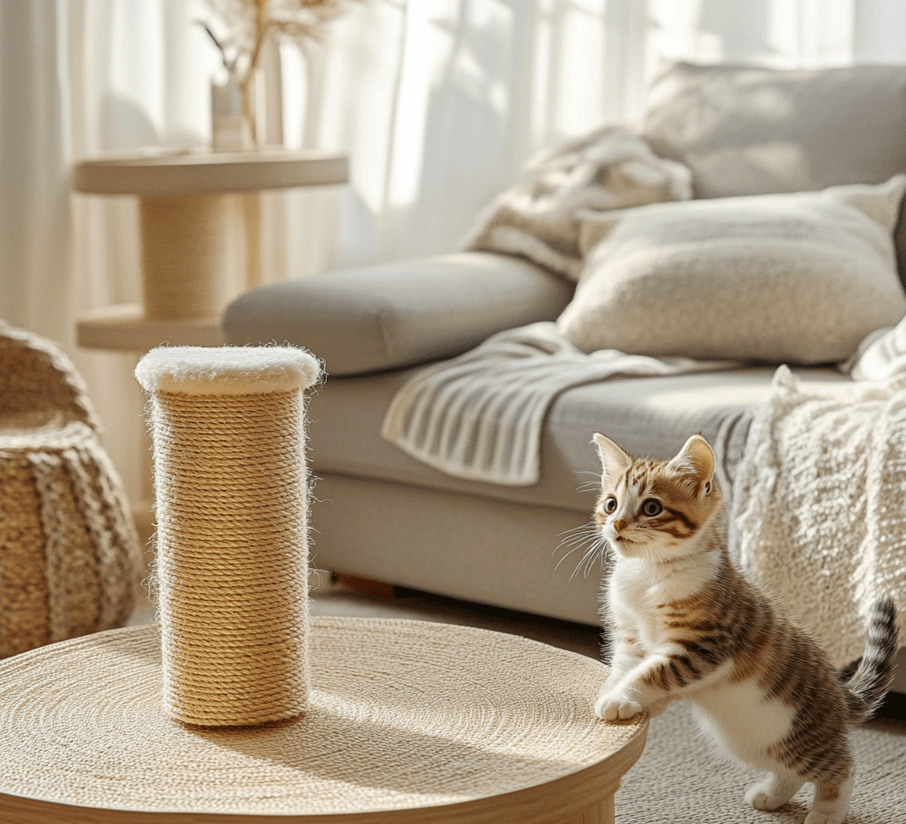
Cats have a biological need to scratch and claw but might not know what is acceptable for them to exactly claw on, unless they are kept safe. Overturned furniture, such as couches and tables, are typical offenders, along with rugs and carpeted stairs. When declawing your furniture for the new kitten, remember that you also have to declaw any other objects it might crawl on such as long tablecloths, curtains or bookshelves. In order to channel these behaviors you can place a scratching post or cat tree of her own and let her know that those are the objects she should be using, not your furniture.
Secure What She Can’t Have
Naturally, cats are curious creatures which means that just because you closed the cabinet door does not mean your kitty will no longer explore. Look at what areas of your kitchen is a potential risk and start there, buy childproof locks to cabinets like cleaning supplies, or medicine. And you may hide these on the top shelf of a closet just to ensure that they are out of reach. Keep in mind that your cat is the king of climbing, so even the closet door should be closed.
But if there is this one room where your kitten especially does not bother, then just make sure the door to that room stays closed at all times.
Make sure the door to that special room your new kitten is never allowed in is closed at all times. As the Mother Nature Network points out, child or dog-gates won’t have any effect if you have a cat that can jump five times to her own height! Anything that is too valuable to leave out should be locked away. So, did you inherit a unique family vase from a dead relative? Pack it up safely and store it out of reach until your pets are able to manage these objects.
Check Small Spaces
Kittens usually like to curl up in a corner or small space to sleep. Similarly, make it a habit to check the dryer for napping kittens before closing the door. This applies to other quiet areas including clothing drawers, refrigerators and the freezer.
Secure All Window Screens
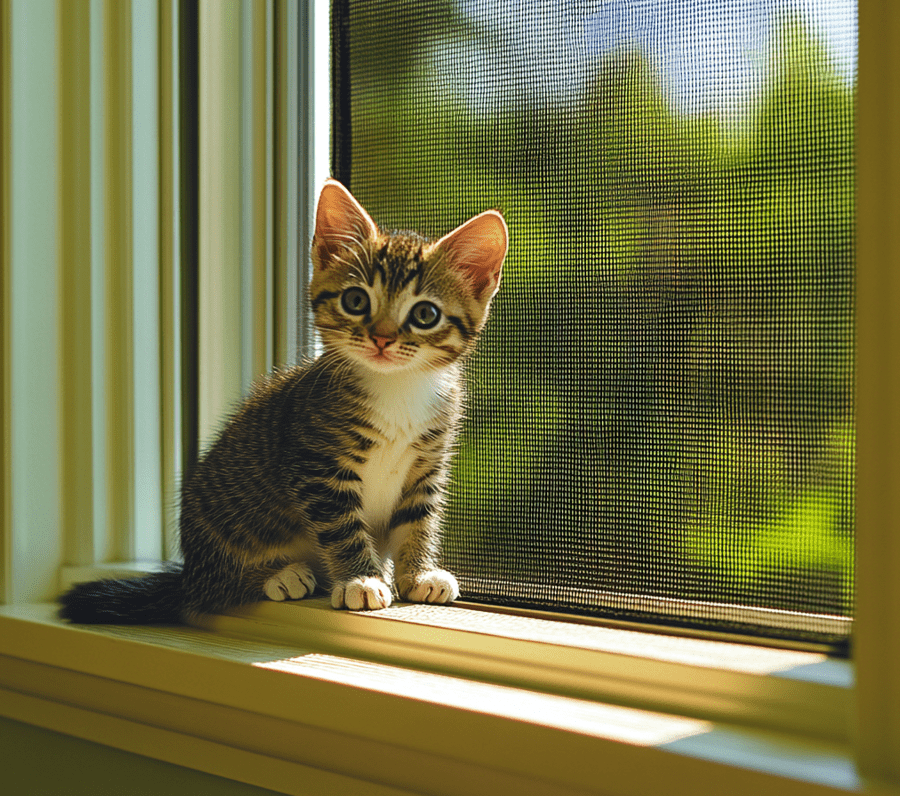
Kittens, once born, can often be caught lying on a window ledge as they frolic in the sunshine. When kitten-proofing your home, it is important to make sure window screens and door screens are also Intact year-round even in colder months. This prevents accidents in the warmer months when your cat is becoming accustomed to its surroundings. It is also advisable that you go for cat-proof screens, and blinds although they can be more durable and protective in comparison to your standard screens.
Provide Ample Toys
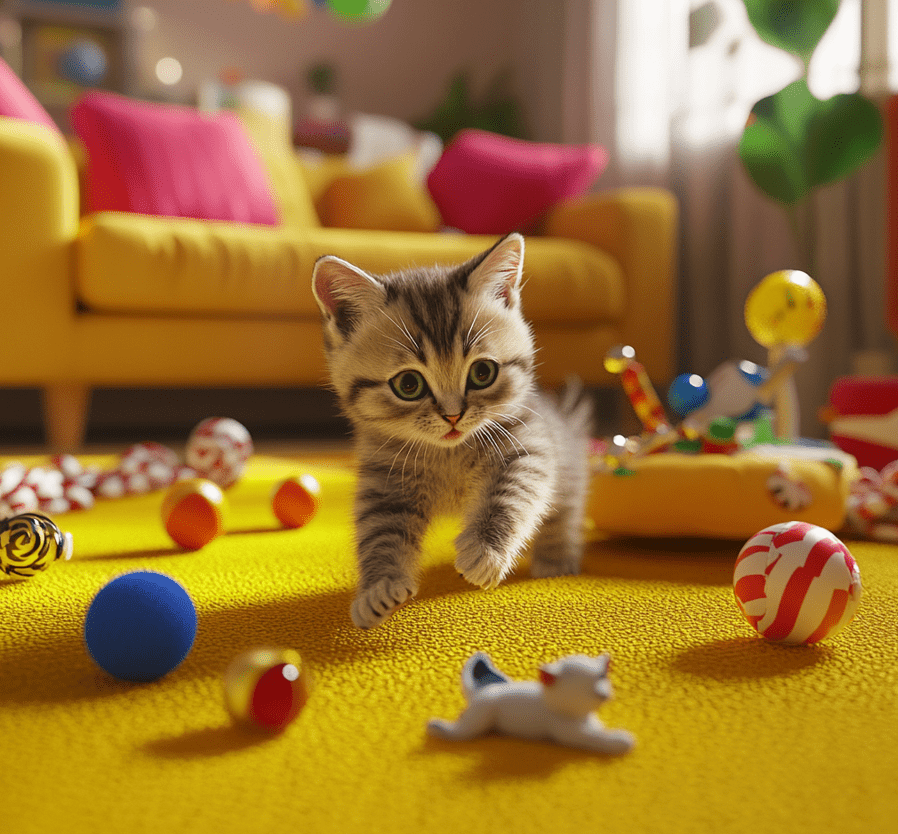
Play and entertainment is a great way to save some mischief. Being playful, she will need toys to play with after naps. Examples of the stuff you need would be toy mice, balls with bells in them which keep your cat noisy so that you can get an idea where she is during the day. Most of the day, your kitten will probably go back and forth between playing and lying on your lap so that you can nap.
Kitten-Proof Your Home And Be Patient
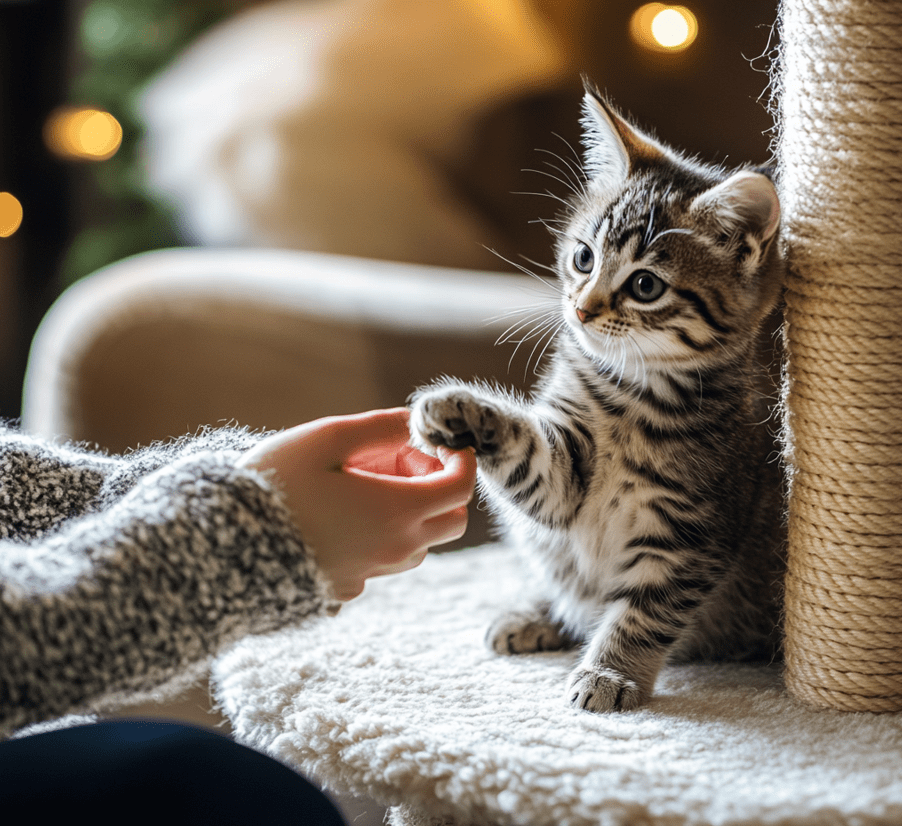
After adopting a new cat, it may be hard to teach her all the rules of the house at once, because no matter if she is young or older, inexperienced can. While your kitten may not care about wires or any small item left lying around the floor, they will probably be wildly interested in attacking your curtains and bouncing onto shelves. She may just prefer drinking out of the sink than from her water bowl. To allow your new cat to be comfortable in transition to her new home, it is recommended that you keep her confined into a small room designated for cats. As she became more familiar with the rules slowly allowed her access to the rest of the house.
Monitor him closely when she tries her new surroundings. If she is interested in potentially dangerous areas, you protect her. You need to redirect her behavior in a calm and friendly voice, making sure there are no harmful actions she might take.
Never punish your kitten for behavior! Since she is still learning the rules that you have in your place, revealing them all at once may be a bit too much for her to grasp right now. Punishing your child can make it worse by causing even more stress and withdrawal. Instead, learn proper training practices and support excellent behaviors through positive reinforcement. But if you see your cat getting into mischief, just gently redirect her interest to her toys or scratch pad. Your pet is still learning and relies on you for direction. Be patient, as if nurturing a young child exploring the world for the first time, and your connection will grow ever deeper.

